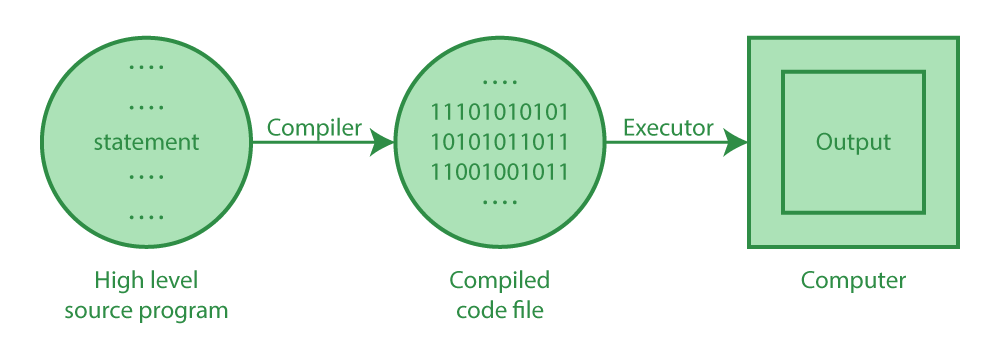
Ahead-of-Time Compilation vs. Just-in-Time Compilation in Java: A Comparative Analysis
Introduction:
Compilation is a fundamental process in software development, and in the Java world, two primary compilation strategies are used: Ahead-of-Time (AOT) compilation and Just-in-Time (JIT) compilation. Both approaches have their distinct advantages and trade-offs. In this blog post, we will delve into the details of AOT and JIT compilation in Java, explore their differences, and provide insights into when to use each approach.
Understanding Ahead-of-Time (AOT) Compilation:
Ahead-of-Time compilation refers to the process of translating source code into machine code before the application is executed. In AOT compilation, the entire program or its significant parts are compiled in advance, typically during the build phase. The resulting binary is platform-specific and does not require further compilation at runtime.
Key Characteristics of AOT Compilation:
- Pre-Compilation: AOT compilation occurs before the execution of the application, allowing for optimizations and analysis to be performed ahead of time.
- Faster Startup: AOT-compiled code reduces startup time since there is no need for on-the-fly compilation during runtime.
- Lower Memory Footprint: AOT-compiled applications generally have a smaller memory footprint as they exclude the need for JIT compilation and related runtime components.
- Standalone Executables: AOT compilation enables the creation of standalone executables that can be deployed and run without the need for a Java Virtual Machine (JVM) installation.
- Platform Independence: AOT-compiled code is platform-independent, allowing for easy deployment on different platforms without recompilation.
Understanding Just-in-Time (JIT) Compilation:
Just-in-Time compilation, on the other hand, is a runtime compilation technique where the JVM analyzes the application's bytecode during execution and dynamically compiles parts of the code into machine code. JIT compilation optimizes frequently executed sections of the code to improve performance.
Key Characteristics of JIT Compilation:
- Dynamic Compilation: JIT compilation occurs at runtime, analyzing the code as it is being executed, and selectively optimizing the frequently used portions.
- Adaptive Optimization: JIT compilers can make runtime decisions based on profiling information to optimize the code further.
- Performance Optimization: By dynamically compiling and optimizing code during runtime, JIT compilation aims to improve execution speed and overall application performance.
- Higher Memory Footprint: JIT compilation requires additional memory for storing compiled code and related runtime structures.
- Platform Dependence: JIT-compiled code is platform-dependent, necessitating a JVM for execution.
Comparison of AOT and JIT Compilation in Java:
- Startup Time: AOT compilation offers faster startup times since the code is pre-compiled, whereas JIT compilation incurs additional overhead during startup as it needs to analyze and compile the code dynamically.
- Execution Performance: JIT compilation excels in performance optimization once the code is up and running. It can dynamically adapt and optimize frequently executed portions, resulting in potential performance gains over AOT-compiled code.
- Memory Usage: AOT compilation generally requires less memory compared to JIT compilation. AOT-compiled applications exclude the need for JIT compilation overhead, resulting in a smaller memory footprint.
- Portability: AOT-compiled code is platform-independent and can be deployed on different platforms without recompilation. In contrast, JIT-compiled code is platform-dependent, requiring a JVM compatible with the target platform.
- Development Workflow: AOT compilation is integrated into the build process, requiring additional build steps to generate the executable binaries. JIT compilation is transparent to the developer during development but incurs a slight runtime overhead for compilation.
When to Use AOT Compilation:
- Applications with critical startup time requirements, such as serverless functions or short-lived processes.
- Memory-constrained environments where reducing memory footprint is crucial.
- Creating standalone executables for easy deployment and distribution.
- Ahead-of-time performance optimization for specific code paths.
When to Use JIT Compilation:
- Long-running applications where execution performance is critical.
- Applications with dynamic or changing code paths.
- Utilizing adaptive optimizations based on runtime profiling.
- Taking advantage of JVM features, such as dynamic class loading and bytecode verification.
Conclusion:
Both Ahead-of-Time (AOT) compilation and Just-in-Time (JIT) compilation play significant roles in the Java ecosystem, offering unique benefits and trade-offs. AOT compilation excels in reducing startup time, lowering memory footprint, and enabling standalone executables. JIT compilation, on the other hand, provides dynamic performance optimization, adaptability, and platform flexibility. Understanding the characteristics and use cases of each approach allows developers to choose the most appropriate compilation strategy based on their application's requirements. By leveraging the strengths of AOT and JIT compilation, Java developers can optimize their applications for faster startup, enhanced performance, and efficient memory utilization.
Data Engineer | Data Analytics Engineer
8moThanks for sharing!! 😊
--
8moi hava a query that for angular which of them should be preffered?
Java Architect | Backend Development Trainer | Spring | Microservices | Helping Java developers elevate their skills from a beginner to an expert level, to excel in their programming careers with my tailored JUM-Program
10moExcellent explanation Ravi Shankar Raj Thanks for sharing!
Full-stack Developer at MetaGeeks Technologies
10moNice explanation of compilation Ravi Shankar Raj sir 😇